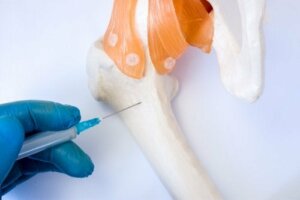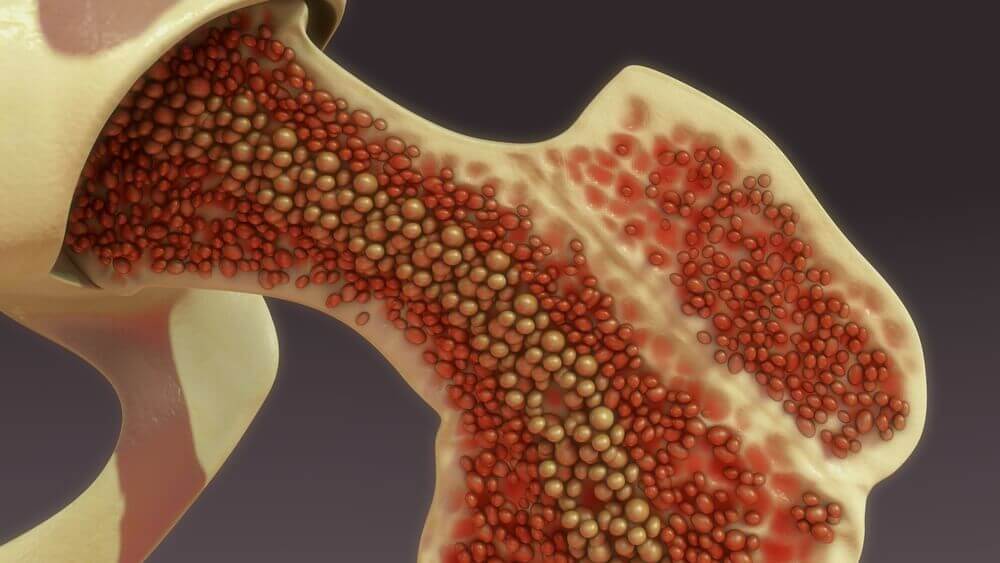Bone Marrow Donation: What Does It Entail?


Written and verified by the doctor Leonardo Biolatto
Bone marrow donation is a humanitarian and facilitating action for bone marrow transplantation. Healthy donors can help patients with serious illnesses whose lives are at risk.
The diseases that most frequently benefit from a bone marrow transplant, among others, are the following:
- Leukemia
- Aplastic anemia
- Lymphoma
- Myeloma
What is bone marrow?
Bone marrow is a tissue in the human body that produces blood cells and is part of the immune system. Within the bone marrow are what we know as stem cells. The most specific scientific name for these cells is hematopoietic progenitors. This is due to their ability to give rise to blood cells:
- Red blood cells
- White blood cells or leukocytes
- Platelets or thrombocytes
Bone marrow diseases are those that alter the ability of the tissue to effectively produce these cells – whether due to overproduction, underproduction, or abnormalities.
For many of these diseases, the solution lies in a bone marrow transplant. And there, bone marrow donation plays an important role.
Bone marrow transplantation
A bone marrow transplant basically consists of replacing the diseased bone marrow tissue – inside the bones – with healthy tissue. This procedure is also known as stem cell transplantation, since it mainly involves the grafting of these cells.
But not every sick person is able to receive bone marrow tissue from any donor. A match is critical to success and to avoiding more serious complications later. This is why we talk about compatible and incompatible donors.
What determines bone marrow donation compatibility is the human leukocyte antigen (HLA). HLA is a group of proteins from various cells, especially white blood cells. And it’s a recognition system that the human body has to determine what is its own and what isn’t.
Each person has their own HLA system. That particular identity allows the immune system to defend the body from outside threats that can make it sick. Of course, HLA alone won’t be able to distinguish between bacteria, for example, and bone marrow donation tissue.
If the HLA between two individuals is similar enough, then the recipient’s body will accept the bone marrow transplant. Otherwise, the recipient’s body will reject the foreign tissue. Much of the success of the operation lies in the degree of HLA compatibility between donor and recipient.

Read more: What Are Stem Cell Treatments For?
What does bone marrow donation involve?
When a person decides to be a bone marrow donor, they’ll most likely have a peripheral blood stem cell collection (PBSC).
First, five days before the actual donation, the donor will receive one injection per day of granulocyte colony stimulating factor (G-CSF). The injection takes about five minutes and causes the stem cells to move from the bone marrow into the circulating blood.
Once stimulation with the injectables is complete, removal of the donated tissue must take place. Doing so involves placing a needle in each arm. One of the needles draws blood to circulate through a machine that will obtain the stem cells. At the same time, the machine returns the blood to the body through the other needle.
The collection takes about three hours in total and may need to take place again the next day. Some minimal adverse effects may occur in the donor, such as headache and bone pain.
Less frequently, it may be necessary to collect tissue directly from the bone. Professionals will decide if this is appropriate, however, this type of bone marrow donation is not normally indicated. It’s more complex and is considered surgery.
Donors who undergo direct bone marrow collection must rest for approximately one week after the procedure. Also, the adverse effects are more intense and longer lasting.

Keep reading: World Blood Donor Day Helps Save Lives
Donation requirements
In general, in order to be an eligible donor, individuals must meet a series of requirements:
- Be at an age of between eighteen and fifty-five years old
- Weigh more than 110 pounds
- Not suffer from any disease that can be transmitted to the recipient of the donation
- Be healthy enough not to put one’s own life at risk when donating
The first step is to sign the informed consent accepting the donation. Then, professionals will take a blood sample from the potential donor to analyze the HLA and upload that information into a database.
When the time comes, if the actual donation is necessary because there’s a compatible recipient, the collection will take place in a hemotherapy center.
Each country and each region has its own system for registering bone marrow donations. You can consult the health centers near you to get more information about how the issue is organized in your area.
All cited sources were thoroughly reviewed by our team to ensure their quality, reliability, currency, and validity. The bibliography of this article was considered reliable and of academic or scientific accuracy.
- Rodríguez-Pardo, Viviana Marcela, et al. “Aislamiento y caracterización de células” stem” mesenquimales de médula ósea humana según criterios de la Sociedad Internacional de Terapia Celular.” Universitas Scientiarum 15.3 (2010): 224-239.
- Lozano, Jorge E., and Francisco Cuéllar. “Transplante de médula ósea. Revisión de actualidad.” Acta Med Colomb 16.6 (1991): 322-32.
- de La Guardia Peña, Odalis M., et al. “Estudios inmunológicos en la pareja donante/receptor para trasplante de células progenitoras hematopoyéticas.” Revista Cubana de Hematología, Inmunología y Hemoterapia 32.2 (2016): 0-0.
This text is provided for informational purposes only and does not replace consultation with a professional. If in doubt, consult your specialist.








